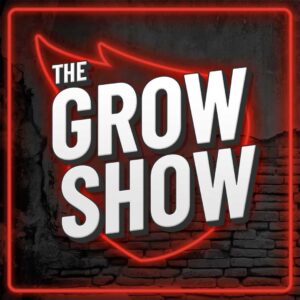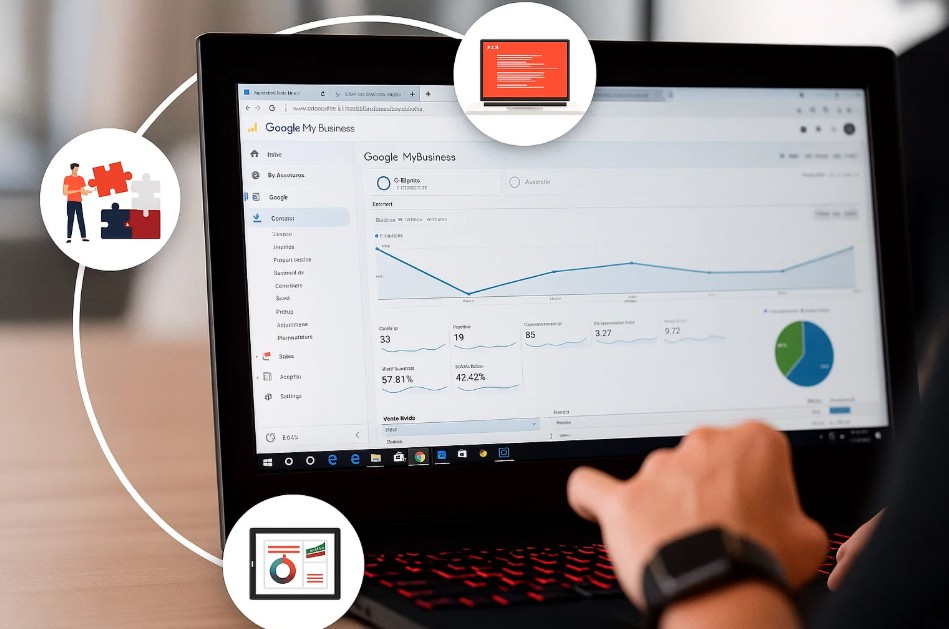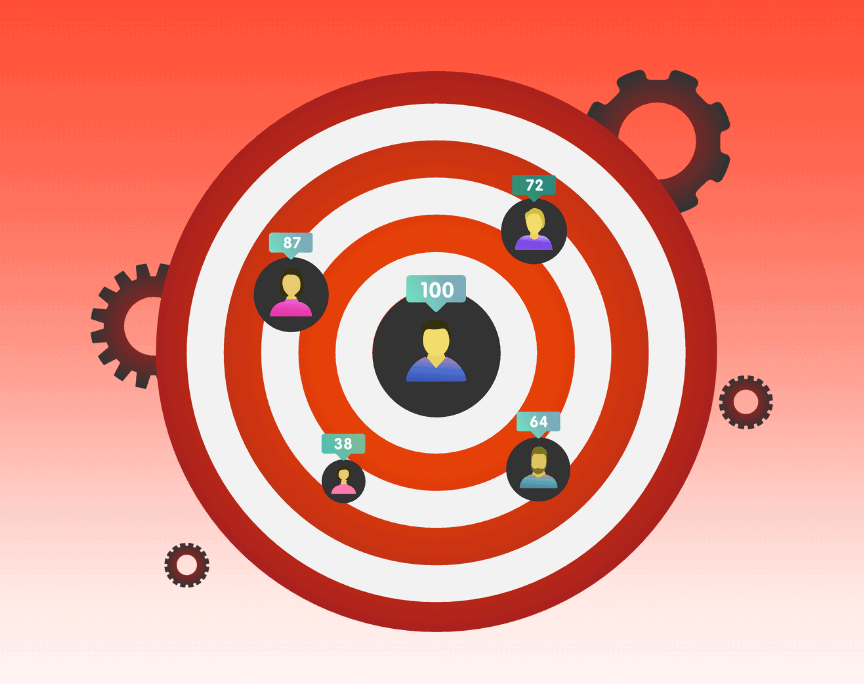If you’re an MSP generating leads but struggling to convert them consistently, the problem likely isn’t volume—it’s qualification. Your team doesn’t need more leads. They need better leads. More specifically, they need a system to identify which leads are ready to buy and which ones still need nurturing.
That’s where lead scoring comes in.
Implementing an effective lead scoring system helps your managed service provider business qualify leads faster, prioritize outreach, align marketing and sales, and ultimately close more deals.
This guide will walk you through everything you need to know about lead scoring for MSPs, including:
- The logic behind scoring
- Proven scoring frameworks
- Behavioral and demographic scoring
- CRM integration
- Mistakes to avoid
- How to get started today
By the end, you’ll have a full roadmap to qualify and prioritize leads efficiently—and convert more of your pipeline into paying clients.
Contents
- 1 Why Lead Scoring Matters for MSPs
- 2 Step 1: Define What a Qualified Lead Looks Like
- 3 Step 2: Build Your Lead Scoring Framework
- 4 Example Scoring Model for MSPs
- 5 Step 3: Integrate Lead Scoring with Your CRM
- 6 Step 4: Set Thresholds and Sales Actions
- 7 Step 5: Regularly Review and Refine Your Model
- 8 Mistakes to Avoid with Lead Scoring
- 9 How Lead Scoring Impacts Marketing Campaigns
- 10 Real-World Example: Scoring Success in Action
- 11 Lead Scoring Isn’t Just for New Leads
- 12 Scoring for ABM and Vertical Targeting
- 13
Why Lead Scoring Matters for MSPs
MSPs operate in a high-consideration sales cycle. Decision makers take time to compare options, evaluate risks, and explore whether outsourcing IT is right for them. Without lead scoring, your sales team ends up guessing:
- Who’s ready to buy?
- Who’s just browsing?
- Who’s a good fit?
Guessing wastes time. Lead scoring gives your team data-driven clarity to focus their time on the most promising opportunities.
Key Benefits of Lead Scoring for MSPs
- Shorten sales cycles by focusing on high-intent leads
- Improve sales efficiency by filtering out unqualified contacts
- Align marketing and sales around a shared definition of a qualified lead
- Increase ROI from email, ad, and event campaigns
- Drive predictable growth with a systemized approach to lead qualification
Step 1: Define What a Qualified Lead Looks Like
Before assigning points or setting up a CRM rule, start with your Ideal Customer Profile (ICP).
Questions to Ask:
- What company size are we targeting?
- What industries do we serve best?
- What roles typically drive the buying decision?
- What problems are we uniquely positioned to solve?
- What technologies or compliance requirements matter?
Your ICP might include:
- 25 to 200 employees
- Located in specific regions
- Decision maker = CFO, IT manager, or operations lead
- Operating in healthcare, legal, or financial services
- Needs cybersecurity, co-managed IT, or 24/7 support
Write this down and socialize it across your sales and marketing teams.
Step 2: Build Your Lead Scoring Framework
Lead scoring works by assigning numerical values (points) to a lead’s characteristics and behaviors. The higher the score, the more likely they are to buy.
Two Types of Scores
1. Demographic/Firmographic Scoring
Scores based on who the lead is:
- Company size
- Industry
- Job title
- Location
- Tech stack
- Budget
2. Behavioral Scoring
Scores based on what the lead does:
- Email opens/clicks
- Website visits
- Page depth/time on site
- Content downloads
- Webinar attendance
- Booking a call
Both types of scores are essential. Someone might be a perfect company fit but never engage—or someone might click everything but have no authority to buy. Scoring helps balance both.
Example Scoring Model for MSPs
Here’s a sample scoring breakdown you can adapt:
Demographic/Firmographic:
| Attribute | Points |
| 25–200 employees | +10 |
| In target industry | +10 |
| Decision maker title | +15 |
| Located in service area | +10 |
| Non-fit industry | -10 |
| Too small (1–5 users) | -15 |
Behavioral:
| Action | Points |
| Opens email | +2 |
| Clicks email link | +5 |
| Downloads gated content | +10 |
| Attends webinar | +15 |
| Visits pricing page | +10 |
| Schedules discovery call | +25 |
| No activity in 30 days | -10 |
You can customize this based on your content, services, and buyer behaviors.
Step 3: Integrate Lead Scoring with Your CRM
To make scoring work at scale, you’ll need to automate it inside your CRM or marketing automation platform.
Tools MSPs Commonly Use
- HubSpot: Offers built-in scoring rules and workflows
- ActiveCampaign: Flexible scoring and automation options
- Zoho CRM: Score by tags, behavior, and custom fields
- Salesforce: More advanced, ideal for larger MSPs
How It Works
- Set up rules: Define your scoring logic using your CRM’s interface
- Assign thresholds: Create workflows for when a lead hits 50, 75, or 100 points
- Trigger sales alerts: When someone crosses a certain score, notify a rep
- Nurture low scores: Route lower-scoring leads into drip campaigns or re-engagement flows
Integration ensures your sales team always sees the most relevant leads at the right time—without manually sorting through your database.
Step 4: Set Thresholds and Sales Actions
You need to define when a lead becomes:
- Marketing Qualified (MQL)
- Sales Qualified (SQL)
- Sales Accepted (SAL)
- Opportunity
Example:
- MQL = 30 points: Send more nurture content
- SQL = 50 points: Sales gets notified
- SAL = 70 points: Move to discovery call
- Opportunity = call booked + positive fit
Every stage should have a clear action assigned to it. This makes your pipeline more predictable and easier to forecast.
Step 5: Regularly Review and Refine Your Model
Your scoring framework is not set-it-and-forget-it. You should review scoring logic quarterly and after major campaigns.
Questions to Ask During Review:
- Are high-scoring leads converting into real opportunities?
- Are low-scoring leads being overlooked too early?
- Are any points misweighted (e.g., clicks vs downloads)?
- Are your reps following up in a timely manner?
Use CRM reports and feedback from your sales team to tweak point values, add new behaviors, or change threshold levels.
Mistakes to Avoid with Lead Scoring
Even a great strategy can fail if it’s poorly executed. Here are common traps to avoid:
1. Too Many Leads Score Too High
Make sure you’re not handing out points too easily. If everyone is a “qualified lead,” no one really is.
2. Not Scoring Negatives
Subtract points for bad fits, cold leads, or unqualified actions. Inaction matters as much as engagement.
3. Sales Doesn’t Trust the Score
If the sales team isn’t acting on high scores, your scoring model might be off—or they haven’t been trained on what it means.
4. Not Updating the Model
Campaigns, services, and buyers change. Your model should too.
How Lead Scoring Impacts Marketing Campaigns
Lead scoring isn’t just for sales. It helps marketing refine its efforts by identifying what works.
Insights You’ll Gain:
- Which content leads to conversion
- What messaging resonates with decision makers
- Which sources (LinkedIn, email, webinars) bring the best-fit leads
- Where leads drop off and need nurturing
With this data, marketing can build smarter campaigns and continuously improve lead quality.
Real-World Example: Scoring Success in Action
MSP Company: BrightWave Technology
Focus: Co-managed IT + cloud support
Challenge: Too many low-quality leads eating up sales team time
Solution: Implemented a lead scoring model in HubSpot
Scoring criteria included: company size, industry, webinar attendance, and pricing page views
Outcome after 3 months:
- 36% drop in sales time spent on unqualified leads
- 24% increase in discovery call bookings from MQLs
- 9 new monthly contracts from high-scoring leads
- Better alignment between sales and marketing
Why it worked: The team built a model around real buying behaviors and CRM automation did the heavy lifting.
Lead Scoring Isn’t Just for New Leads
Use scoring to manage existing clients and renewal opportunities too.
- Monitor clients who stop opening emails or logging into portals
- Score upsell interest based on product page visits
- Identify churn risk based on declining engagement
Scoring helps retain and grow current accounts—not just land new ones.
Scoring for ABM and Vertical Targeting
If you’re running account-based marketing (ABM) or targeting niche industries, scoring helps ensure your best-fit accounts are getting proper attention.
- Assign higher baseline scores to key accounts
- Increase points for targeted engagement (e.g., vertical landing pages)
- Prioritize outreach from dedicated account managers
Lead scoring feeds directly into a focused, strategic growth approach.

Madison Hendrix
Madison has worked in SEO and content writing at Abstrakt for over 5 years and has become a certified lead generation expert through her hours upon hours of research to identify the best possible strategies for companies to grow within our niche industry target audiences. An early adopter of AIO (A.I. Optimization) with many organic search accolades - she brings a unique level of expertise to Abstrakt providing helpful info to all of our core audiences.
- Madison Hendrix#molongui-disabled-link
- Madison Hendrix#molongui-disabled-link
- Madison Hendrix#molongui-disabled-link
- Madison Hendrix#molongui-disabled-link







